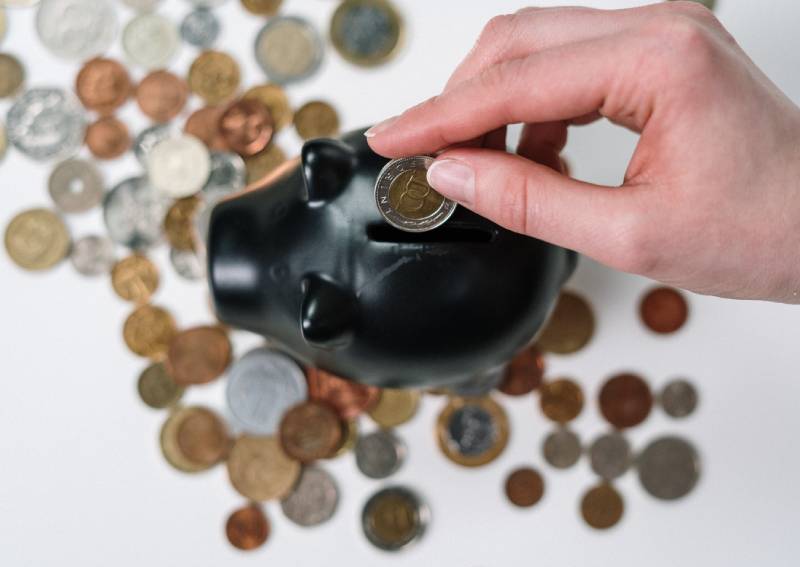How I used crowdfunding to start my eco-friendly business


You can use your savings to launch your own business. Or you can borrow from a bank or your relatives. Or you can try crowdfunding.
This innovative method is based on the concept of raising funding via crowds of people. Crowdfunding is becoming more popular because it is a way to raise money quickly.
It's used where traditional banking channels provide only partial and imperfect solutions — or no solutions at all.
Lynn Tan cleverly used crowdfunding to start her own eco-shampoo business. Mother to three kids, she says, "I care about how environmental issues are going to affect our children's future."
She came up with the idea of The Powder Shampoo — a powder-to-foam shampoo that lathers just like any other liquid shampoo when you add water.
But because it's not sold as a liquid shampoo, it uses less resources to make. Plus it comes in a refillable aluminium bottle to avoid the use of plastic.

The idea behind crowdfunding is simple. You advertise your project on the platform and ask people to contribute money. Some people donate funds simply to support a business with a worthy idea. Other crowdfunders see their contribution as an investment, and they expect a return on their money.
Crowdfunding platforms for business include Kickstarter and OurCrowd.com, or there's Indiegogo and Seedrs.
So why did Lynn use crowdfunding? She shares, "Purely to experience and learn from the process. And mainly for marketing. It was my first time and I learnt a lot during the process."
Having worked as a distributor for botanical beauty brands for the past 20 years, Lynn already understood the vital importance of marketing.
She did not aim to fund her entire business using crowdfunding, but it was still an important business step as it helped her promote brand awareness and conduct pre-sales research.
"I enjoyed the publicity and marketing generated via Kickstarter. I also enjoyed being able to start rolling out stocks immediately when the goods were ready to be shipped.
''It was also very encouraging to have consumers from around the world buy and give you early feedback on the brand. So overall, although it did not cover all my initial investment for my business, it has its merits — and I will do it again."
If you are also thinking about making use of crowdfunding to start up your business or create your own product, Lynn shares tips to help you.

What's the most important thing to ensure a successful crowdfunding campaign? Lynn's answer is, "Having a strong network of friends, family, and followers who will react quickly for you to achieve your goals fast."
She also adds that it's important to generate interest and collect relevant data a few months ahead of your campaign launch. Researching the specific industry you are targeting will help you stay informed on industry products and trends.
Looking at other crowdfunding campaigns within your specific industry can provide you with some inspiration on how to model your campaign.
"There are many online resources that you can use to research and study the top Kickstarter campaigns for different industries and analyse what makes them successful," she notes.

Before you start crowdfunding, you'll want to make sure your idea is something unique and compelling. People must want to invest in it. Consider things like who your target audience is, and what kind of angle you can come up with?
Lynn's background in the advertising and the beauty industries provided her with the knowledge and confidence she needed to boost her Kickstarter campaign.
She knew she wanted to target people who want eco-friendly beauty alternatives. The Powder Shampoo's products are vegan, cruelty-free, paraben-free, phthalate-free, silicon-free, sulfate-free, and they're packaged in aluminium, to reduce the use of plastics.
"I did some research, and I can say our product is unique because we commonly see shampoo bars as sustainable alternatives for liquid shampoos. Since we're targeting the same market — consumers who want to switch to more sustainable alternatives — we provided them with another choice and option."

Support isn't a one-way street. People who back crowdfunding campaigns do so because they like supporting new, innovative ideas.
But, they often also want to feel like they're getting something in return. Rewards are a great way to thank your backers for their support and give them something in exchange.
It doesn't have to be anything complicated. You could just offer a copy of the product that you're campaigning for. Other options include behind-the-scenes souvenirs and personalised works.
Since Lynn was new to Kickstarter, she spent time learning the ropes from other campaigns on the site.
"I found inspiration in other projects and campaigns within the same industry as mine, such as personal care and lifestyle products. We may have different products and target markets, but advertising and marketing are universal.
''I patterned our reward system according to what other similar campaigns are also offering. I studied and analysed their price structure, reward offers, and what I can provide for my backers."
[embed]https://www.instagram.com/p/CUhuZSwJVkb/?utm_source=ig_web_copy_link[/embed]
Having a professional-looking campaign shows that you take your backers seriously. They'll be more willing to invest in your campaign if they have faith in your professionalism.
According to Lynn, "one way this can be done is by providing professionally done visuals such as videos and images for your campaign. This can help attract potential backers to support your product."
Professionalism also extends to things such as hitting set deadlines, and keeping your campaign organised and updated online.

Kickstarter campaigns have time-constraints, so timing is key. You'll want to target your potential customers as quickly as possible.
"The deadline for campaigns ranges from a week to three months. However, I advise doing it for less than a month because customers can change their minds," Lynn shares.
"A backer may support you today, but they can just request a refund if they change their mind and the campaign is still ongoing. So it's better to keep the campaign short and tight."

A good marketing plan is perhaps the most important thing of all.
Lynn recommends having a pre-campaign before the launch of your actual Kickstarter campaign.
"It can be as long as six months before your campaign starts. This is where you do your marketing to your potential backers — such as your friends, family, loved ones, or established followers," she notes.
In addition to connections you already have, she shares, "one of the good ways to attract potential backers is to capture their email addresses. You offer an attractive incentive, such as a special reward or discount. So when your campaign starts, you can retarget them, and they can use the incentive offered to them to support your campaign."

It can be hard to fully fund a project using crowdfunding platforms. So look at other sources of funding, while using crowdfunding as a way to supplement your project.
Lynn recommends treating Kickstarter as you would a marketing campaign — a way to get the word out about your product. She points out that raising funds on crowdfunding platforms is not necessarily free — you have to spend on marketing to get "discovered".
From studying other campaigns Lynn discovered that internal marketing costs on crowdsourcing platforms range from 25 to 50 per cent of the targeted fundraising amount.
ALSO READ: This 25-year-old millionaire started her business with just $1,000 and a gut feeling
Meaning, if Lynn wanted to raise $100,000 on Kickstarter, she'd first have to put $25,000 to $50,000 into marketing her campaign.
She shares, "I did not do that. But I believe if I wanted to achieve a high six-figure amount from crowdfunding, I would have had to invest a five-figure amount in the marketing of the campaign."
This article was first published in The Singapore Women's Weekly.